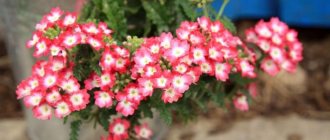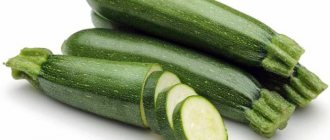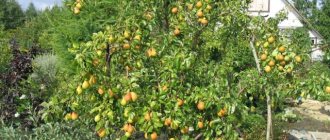Chrysanthemums are the favorite flowers of many gardeners. They are bright, have a huge variety of colors and shades, and can easily decorate any area, delighting you almost until late autumn. They can be propagated in several ways: by cuttings, dividing the bush. However, many people choose the method of growing seedlings from seeds. It is quite light, but allows you to get strong and healthy seedlings.
When to sow chrysanthemum seeds for seedlings
The optimal time for planting is from mid-February to early March. It is very important to carry out the procedure on time, otherwise, if you are late, you should not expect flowering in the first year. However, these terms are arbitrary - much depends on the growing region:
- Southern regions - from mid to late February;
- in Siberia and the Urals the deadlines are slightly postponed - it is better to carry out the work at the very beginning of spring;
- in the Middle and Central zones, planting is carried out after the 20th of February.
Many gardeners also take into account the Lunar calendar. According to it, the following days are considered favorable for planting seeds:
- February: from 1 to 8, from 10 to 20, and also from 25 to 20;
- March: from 2 to 8, from 10 to 14, and from 29 to 31;
- April: 1.2, from 5 to 7, from 18 to 29, and also 24, 25.
You should not carry out any work during the following dates:
- February: 9, from 21 to 23;
- March: 9, 19-21, 24th;
- April: 8, from 15 to 17, 23.
Pests and diseases of chrysanthemums
Chrysanthemum diseases
If cultivation rules are not followed and chrysanthemums are poorly cared for, they can be affected by fungal diseases such as powdery mildew , verticillium , septoria , rust and gray rot . Septoria, gray rot and rust are treated with copper-containing preparations: Bordeaux mixture, copper oxychloride, copper sulfate and other fungicidal preparations. You can also use copper-soap emulsion against gray rot and powdery mildew, and colloidal sulfur against rust. However, if chrysanthemums are allowed to grow randomly, they may become diseased again.
The situation is worse with diseases such as mosaic , aspermia and dwarfism . They are excited by viruses for which there is no cure, so the infected plant will certainly die and, most likely, will infect neighboring chrysanthemums. If you see signs of a viral disease - variegated leaves, deformed inflorescences, stunted growth or premature flowering - immediately remove the diseased specimen, and spill the place where it grew with a strong solution of potassium permanganate. Viruses are transmitted through seeds and soil, but are most often carried by sucking pests.
Pests of chrysanthemums
Of the pests, the most dangerous for chrysanthemums are nematodes , which are very difficult to detect. A sign of their presence are mosaic spots on the leaves that darken over time. You can fight nematodes only with preventive measures: when dividing a bush or planting in the ground, treat the roots of the chrysanthemum with a solution of Phosfamide, and spill the soil with formaldehyde.
Aphids , the same sucking insect that carries deadly incurable viruses, also pose a danger to chrysanthemums Aphids feed on plant sap, causing chrysanthemum growth to slow down. A single colony is destroyed by removing the insects along with the leaves and shoots, but if the aphids have covered the entire bush, you will have to resort to treating the chrysanthemum with Aktara, Actellik or another preparation of similar action.
meadow bug also feeds on plant sap . As a result of its vital activity, spots appear on the leaves, which gradually turn brown. Diseased leaves die and the baskets do not open. Prevention against the meadow bug is treatment of chrysanthemums with Phosfamide, and bushes affected by the pest should be treated several times with a solution of 1 teaspoon of baby shampoo in 10 liters of water.
Snails and slugs eat the leaves and flowers of chrysanthemums. Traps are set up for the mollusks: pieces of slate or boards are placed here and there in the area. Slugs crawl under them to hide from the hot sun, and you can collect them and destroy them. Another way to stop mollusks from eating your flowers is to install plastic rims around your bushes to prevent the pests from getting too close to your chrysanthemums.
Step-by-step instructions for sowing chrysanthemum seedlings
Planting chrysanthemum seeds for seedlings also includes additional procedures: choosing a container for planting, preparing seeds and soil. To avoid problems with planting and subsequent cultivation of this crop, it is important to take into account all the nuances.
Selection and processing of containers
For planting chrysanthemums, it is recommended to use wide and deep common boxes (you can choose plastic or wooden). But many gardeners immediately plant in voluminous individual cups made of plastic or compressed cardboard. In this case, you can avoid subsequent picking of this rather delicate crop.
Important Tips:
- before using the container, it is worth disinfecting it using a solution of potassium permanganate;
- Since chrysanthemum does not like stagnant moisture, drainage holes should be made in the planting boxes.
Sowing chrysanthemum seeds in large individual plastic cups will eliminate the need for subsequent picking of this rather delicate crop.
Seed selection and preparation
To get healthy and strong flowers, it is important to use high-quality planting material. You can collect the seeds yourself or purchase them in the store. If the latter option is more preferable, you need to purchase grains from reliable stores in order to be absolutely sure of the quality of the product.
Chrysanthemum seeds are small, so it is important to handle them carefully. Before planting, the seeds are disinfected. For this you can use:
- potassium permanganate solution;
- brilliant green;
- Chlorhexidine;
- Fitosporin solution.
It is enough to immerse the seeds in any of them for 10-15 minutes, then rinse thoroughly and dry.
Soil preparation
Both seedlings and adult chrysanthemum plants prefer fertile, loose soil. You can buy it at any garden store, choosing a soil mixture for flowers. But most gardeners prefer to make their own soil at home. To do this, take humus, garden soil, and peat in equal proportions.
Self-prepared soil is disinfected to destroy pathogens.
Options:
- bake in the oven for half an hour at a temperature of +90 degrees;
- maintain over steam for 40-60 minutes;
- pour with Fitosporin solution.
And so that the soil has a structure suitable for chrysanthemums, it is sifted through a sieve.
Direct sowing
Scheme for planting chrysanthemums for seedlings in a common container:
- A drainage layer 1.5 cm high is laid on the bottom of the box. This can be sand, broken brick or expanded clay.
- Fill the container 70% with the prepared soil mixture and moisten it with warm and clean water.
- A thin layer of sand is poured on top and moistened again with a spray bottle.
- Sow the seeds evenly, maintaining a distance of 2-3 cm between them.
- Uniform sowing is carried out. In this case, the optimal distance between seeds should be at least 3 cm from each other. Lightly press the soil with your palm.
- Once again, moisten the soil, place the container with the plantings in a warm place, the temperature should not fall below 22 degrees.
When planting seeds in individual cups, the scheme will be the same, only for one container you can take no more than three grains. When the seedlings get a little stronger, leave one of the strongest plants, and cut off the rest.
Chrysanthemum shoots
Growing chrysanthemum seedlings from seeds
Sowing chrysanthemum seeds for seedlings
Sowing seeds for growing seedlings is carried out in early spring in moist soil collected equally from peat, humus and greenhouse soil. Ready-made seed mixture can be purchased at a specialty store, and as a rule, it is already ready for use, or you can make it yourself. In this case, before sowing chrysanthemums, it must be sterilized with a weak solution of potassium permanganate and then dried (the potassium permanganate solution is prepared by eye: the water in this case takes on a pale pink color). And then you still need to disinfect the soil mixture itself. To sterilize, the substrate is sifted and calcined in the oven for 15-20 minutes at a temperature of 120-130 degrees.
To sow chrysanthemums with seeds and grow seedlings, you will need a shallow box. A drainage layer of expanded clay or brick chips is placed on its bottom. The prepared soil is poured on top, it is leveled and the seeds are laid out on its surface, pressing them lightly. There is no need to sprinkle them with soil: for the sprouts to hatch, they need light.
Then the soil in the box is sprayed from a spray bottle with pre-prepared, settled water at room temperature and covered with glass or transparent film. Before seedlings emerge, the room temperature must be maintained within +23-+25 degrees. The covering is removed from time to time to ventilate the seedlings, condensation is removed from it, and the substrate is regularly sprayed to prevent drying out.
How to care for chrysanthemum seedlings
To get healthy and strong seedlings, it is important to provide chrysanthemums with comprehensive care. It includes a number of mandatory events.
Temperature and lighting for growing seedlings from seeds
When sowing seeds, it is important to maintain the correct temperature and lighting conditions. This determines how quickly the sprouts will appear and how they will develop. Seed germination occurs at a temperature not lower than 18 degrees. If you plan to sow directly into open ground, it is better to do this no earlier than May, when the danger of frost has passed.
For the southern regions, sowing can be done a month earlier. When growing from seedlings, it is important to provide good lighting. March crops will have enough daylight, but February seedlings need additional lighting (at least 12 hours a day).
When planting seeds, it is very important to adhere to the required temperature regime and remember the importance of lighting for future seedlings.
Seeds germinate at temperatures not lower than +18 degrees Celsius . If a gardener plans to sow chrysanthemum seeds directly into open ground, you can begin work no earlier than mid-May, or better yet, at the very beginning of summer, when a consistently warm temperature has established.
When growing young seedlings, they need to be provided with at least 12 hours of daylight per day. And if the March plants receive the lighting they need in time, then when planting seeds in February, the container with future chrysanthemums will have to be illuminated with phytolamps.
Illumination of chrysanthemum seedlings with phytolamps
Rules for watering seedlings
After planting the seeds, it is important to maintain the moisture of the top layer of soil by spraying the soil with a spray bottle so as not to bury the small seeds. When the sprouts appear, you can water them with a watering can with a special nozzle or carefully pour water over the side of the container.
Activities are carried out as the soil dries. The main thing is to prevent the soil from drying out, which will lead to the rapid death of fragile shoots.
After two true leaves appear on the seedlings, the number of waterings is reduced - by this time the root system is already sufficiently developed and can take moisture from the lower layers of the soil. After each watering, it is advisable to carefully loosen the soil, which will allow the roots to receive the oxygen they need and grow and develop faster.
After two true leaves appear on the seedlings, the number of waterings is reduced.
Fertilizers for feeding chrysanthemums
The choice of fertilizer depends on the variety of chrysanthemums:
- For annuals. It is best to use nitrogen, phosphorus and potassium supplements, as well as trace elements and vitamins. Mix 30 g of nitrogen and phosphorus, add 50 g of potassium, dilute it all and mix it with 10 liters of water. For each plant - 3 liters of additives.
- For perennials. Nitrogen-potassium supplements are also suitable for such plants. Mix 25 g of nitrogen and phosphorus, add 45 g of potassium, dilute in a bucket of water. Each adult plant requires 5 liters of solution.
Annual chrysanthemums develop faster and therefore require more fertilizer than perennial crops. Additionally, for fertilizing use:
- vermicompost;
- saltpeter;
- Agricola.
The main advantage of purchased fertilizers is the presence of vitamins and beneficial microelements.
How and when to pick chrysanthemum seedlings
Picking is carried out after the seedlings have 2-4 true leaves. It is important to carry out this event at the right time, so you should not postpone the procedure. The same soil that was used when planting the seedlings is suitable. Transplant into separate containers . You can use large disposable or cardboard cups.
Scheme of work:
- 1.5-2 hours before the procedure, water the plants with warm, settled water.
- Place fine expanded clay or sand on one cup with a layer of 1 cm - this will be a drainage layer.
- Carefully separate the plants using a plastic spoon. It is important to be careful not to damage the fragile roots.
- Weak seedlings with signs of damage are removed.
- One plant is placed in one cup, and the earthen lump does not need to be shaken off.
- After picking, add soil so that it reaches the cotyledon leaves.
- Gently compact the soil and water the seedlings. Cover with glass or film.
Picking is carried out after the seedlings have 2-4 true leaves.
How to get chrysanthemum seeds
Chrysanthemum seeds are available for sale, but you can collect them yourself. You should know:
- Seeds from small single and semi-double flowers are easier to collect and their germination rate is good, but large-flowered varieties are difficult to propagate in this way, because they produce very little seed material.
- High-quality seeds produce early and mid-flowering chrysanthemums. In late-flowering chrysanthemums, the seeds do not ripen.
So, to get seeds from a plant you like:
- we plant it in the garden bed as early as possible in the spring;
- water regularly, feed;
- stepchild;
- We make sure that there are from 5 to 8 stems left on a small chrysanthemum, and no more than 3 on a large one;
- pinch off, leaving only 1 bud on one stem. This improves the quality of seeds and increases their quantity.
From plants that bloom in mid-summer, seeds are collected while they are still in the garden. With those that continue to bloom in the fall, you should do this:
- Cover the bush with film so that the flowers do not get wet if it is not possible to move it to a greenhouse.
- Before frost, transplant the chrysanthemum into a pot, bring it into the house and place it on a sunny windowsill. If the bush is grown in a greenhouse, then the receptacle can be damaged by condensation. To prevent this from happening, protect it with gauze or agrofilm.
- Collect the seeds as soon as the baskets turn brown. This usually happens in late November-early December. Don't be late, otherwise they will fall asleep themselves.
Important: if the petals of your chrysanthemum are so long that they cover the middle, then they need to be trimmed as they grow. This way, the place where the seeds are located will be better illuminated and ventilated, which will prevent rotting.
When do shoots appear?
When breeding chrysanthemums at home, the first seedlings appear 10-14 days after planting.
When they germinate, the container with the seedlings is moved to a well-lit place, and in order for the plants to quickly adapt to environmental conditions, the film is regularly removed for ventilation, constantly increasing the duration of the period. After 7-10 days, the shelter is completely removed.
A few nuances:
- After picking into separate pots, it is advisable to treat the chrysanthemums with a biogrowth stimulator, for example, Epin.
- The room temperature should be no more than 18 degrees. If there is a lack of sunlight, install a phytolamp near the seedlings at a distance of at least 25 cm.
- Further care of chrysanthemums consists of regular watering and fertilizing with mineral supplements every 10-14 days.
After about a month and a half, the height of the seedlings will be about 25 cm, after which it can be transplanted into open ground.
Some gardeners choose peat tablets for planting. This method has its advantages:
- no additional feeding is required, since they contain fertilizers and growth stimulants;
- there is no need to pick, which is dangerous for fragile seedlings.
Before planting, the tablets are left in a tray with warm water for half an hour and after they swell, 2-3 seeds are sown in each. All that remains is to cover the container with film and place in a warm place.
Chrysanthemum cuttings with a well-developed root system
Caring for chrysanthemums in the garden
How to care for chrysanthemums
Caring for chrysanthemums is easy. If you did not pinch the seedlings immediately after planting, do so at the stage of formation of their eighth true leaf. This is necessary so that the bush chrysanthemum becomes thicker. Only large-flowered chrysanthemums do not need pinching; on the contrary, all side shoots are removed, leaving only a few of the most developed ones. Trimmed shoots can be rooted.
Tall chrysanthemums sometimes require gartering to a support. For this purpose, you can dig a metal rod, a tall wooden peg next to the bush, or place a cylinder of metal mesh around the bush, which will not allow the plant to fall apart.
Watering chrysanthemums
Water chrysanthemums abundantly: from lack of moisture, their stems quickly become woody and the flowers lose their attractiveness. Moistening is carried out as soon as the top layer of soil dries. For irrigation, use non-cold settled or rainwater, to which a few drops of ammonia are added. Pour water so that drops of water do not fall on the leaves and flowers. As soon as the water is absorbed, you can loosen the soil and weed it. Although, if you have mulched the surface of the area, you will have to loosen and weed infrequently.
Feeding chrysanthemums
During the growing season, chrysanthemums need to be fed at least three times alternately with mineral and organic fertilizers. At the beginning of growth, in the first 6-8 weeks after planting, the flower will need ammonia nitrogen, which will help grow foliage, and during the budding period the plant is fed with potassium-phosphorus fertilizers for intensive flowering. Chrysanthemums respond best to liquid fertilizers, which are applied to each bush the day after rain or watering. When applying organic fertilizers (mullein solution or bird droppings), moderation should be observed, since an overdose can cause a burn to the plant.
Chrysanthemum propagation
You already know how to grow chrysanthemums from seeds. In addition to seed propagation, vegetative methods are also used for growing chrysanthemums - cuttings and dividing the bush.
All chrysanthemums can be propagated by cuttings, preserving not only the species, but also the varietal properties of the parents. Cuttings are prepared from young above-ground shoots in February or March. Each cutting should have 3-4 nodes. Compost soil or peat is poured into the box, and a layer of calcined river sand is placed on top of it. Chrysanthemum cuttings are placed at an angle with the lower cut in the sand (the cutting should not touch the compost layer), after which the sand is sprayed with water and a transparent cap is put on the box. Rooting occurs at a temperature of 12-15 ºC. When the cuttings grow roots, they are planted in separate pots. Cuttings are planted in the garden only after frost has passed.
At the same time, when truly warm weather sets in, chrysanthemums can be propagated by dividing the bush. Professionals say that performing this procedure every three years has a positive effect on the quality of chrysanthemum flowering. The bush is carefully dug up, divided into several parts, if necessary, cutting the roots with a sharp sterile knife. The sections are treated with crushed coal, after which the sections are planted in the ground and watered.
Chrysanthemums in autumn
In September, apply the last fertilizer to the chrysanthemums, consisting of potassium and phosphorus fertilizers: they will help the plants wintering in the garden to withstand frost. With the onset of cold weather, cut the garden chrysanthemum at a height of 10-15 cm, hill up the rest of the bush and cover it with a thick layer of dry leaves. If the winter is without snow, you need to lay spruce branches or brushwood on top of the leaves, but you cannot cover the chrysanthemums with an impenetrable film, since they may dry out under it.
Sometimes readers ask how to preserve chrysanthemums that cannot overwinter in the garden. It’s a pity when a beautiful plant dies every autumn. You can save bushes of heat-loving varieties from death by digging them up with a large lump of earth and putting them in boxes. They need to be kept in a bright place at a temperature of 2-6 ºC and air humidity not lower than 80%. If you only need to keep 2-3 bushes, plant each one in a large pot and keep the soil slightly moist throughout the winter.
Planting in open ground: terms and rules
Planting is done when the threat of return frosts has passed, which usually occurs at the end of May or early summer. Two weeks before transplanting, it is important to start hardening off the plants:
- in the first week they simply open the window;
- then they take the plants out onto the balcony or outside, gradually increasing the time.
If you have a greenhouse, you can move the chrysanthemums there for a couple of weeks. The main thing is that the air temperature in it is at least 15 degrees Celsius.
Transplanting chrysanthemums to a permanent place in open ground
Selection and preparation of a site
Chrysanthemums love slightly acidic or neutral soils. It is best to plant them in an area where the soil is loose and allows air and moisture to pass through - in this case, the root system of the plants will quickly develop and become stronger.
If the site has loam or sandy soil, add sand or sawdust to improve aeration. Clay and loamy soils are also not suitable: they quickly freeze and warm up, and do not contain the nutrients the crop needs. To improve the soil, humus and wood ash are added.
It is recommended to prepare the area itself where it is planned to plant chrysanthemums in the fall: dig up the flowerbed to a bayonet depth, breaking up clods of earth.
An important point when choosing a site is that there should be no stagnation of water on it . Therefore, there is no need to choose places with excessive moisture and high groundwater. Lowlands are also not suitable. Even strong and healthy chrysanthemum seedlings can die in such a place.
Chrysanthemums love a site where the soil is loose and allows air and moisture to pass through.
Lighting
The place should be sunny, but at the very peak of UV ray activity (from 12 pm to 3 pm), it is better for the flower to be in the shade.
Windless and flat area
The place for chrysanthemums should be chosen taking into account the fact that this culture does not tolerate drafts and winds. However, there should not be stagnation of air.
Landing
It is recommended to carry out the work on a cloudy day or in the evening, when UV rays are not so active and cannot harm young plants. Both conventional and trench planting methods are suitable.
Instructions:
- One and a half to two hours before planting, the seedlings are watered with warm water.
- Dig a trench 40 cm deep (or make holes - in this case the distance between them should be at least 30 cm).
- A small layer of sand is poured onto the bottom, which will act as drainage, and watered with a small amount of water.
- Seedlings are planted using the transshipment method (together with a lump of earth), maintaining 30 cm between each bush.
- After transplantation, chrysanthemums are watered.
- When the moisture is absorbed, it is advisable to water the plantings with any growth stimulant, for example, “Kornevin”, so that the seedlings can better adapt to the new location.
How to preserve Korean chrysanthemums in winter
Most varieties of Korean chrysanthemum have sufficient winter hardiness and can easily tolerate winters. It is enough just to cut them and cover them, for example, with fallen leaves or cover them with a layer of spruce branches. However, some varieties require additional shelter. To protect such bushes, agrofibre is additionally used, which is then covered with a layer of snow.
Important! Some gardeners dig up flowers that do not have sufficient frost resistance for the winter, placing them in a cellar or basement for the winter. Transplantation is carried out together with a clod of earth on the roots into special boxes, and such plants overwinter at a temperature of + 2-6 °C.
Outdoor care
This culture is quite unpretentious and does not require much care. However, some rules must be followed:
- Perennial chrysanthemums can grow in the same place for 2-3 years. In the first month after planting, it is important to regularly loosen the soil after each watering or rain, since during this period the root system actively grows and underground shoots develop, forming the entire bush. After the specified time, it is better to stop loosening, as it can harm the young growth.
- Chrysanthemums are not afraid of drought, but during the initial growth period they need moisture. During this time, they need to be watered deeply and often three times a week. After the buds appear and flowering begins, the dry watering method is used: they loosen the soil on the very surface and hill up the bushes. The most suitable option for a rainy summer.
- Chrysanthemums will grow better if you mulch the soil around them: this inhibits the growth of weeds and helps stop the movement of fungal agents. Pine needles are considered the most suitable mulching materials for this crop. bark or straw.
- To make the bushes thicker, pinch them off when 8 true leaves appear on young plants. Trimmed shoots are suitable for further rooting and planting in open ground in early autumn.
- It is recommended to tie tall varieties of chrysanthemums to supports made of wooden pegs or metal mesh. This will prevent the plants from falling.
Low-growing chrysanthemums are used for planting in flowerpots and flowerpots
Peculiarities of reproduction of Korean chrysanthemums
Propagating Korean chrysanthemum is quite simple. It can be done:
- vegetative method (cuttings);
- dividing the bush;
- seeds.
Since the Korean chrysanthemum forms numerous basal shoots, it is most often propagated by dividing the bush.
Seeds
The seed method of propagating Korean chrysanthemum is used relatively infrequently, since it does not preserve the varietal characteristics of the plant. The seeds are collected from faded inflorescences and left to ripen in a room with a temperature of + 16-20 ° C, and then stored at + 2-6 ° C. Seeds are planted indoors in February.
As a rule, 3 seeds are sown in each hole. After the sprouts grow to 10–12 cm, they are culled, leaving the strongest sprout.
Cuttings
When propagated by cuttings, all varietal characteristics of Korean chrysanthemum are preserved. Young shoots no longer than 8 cm are used as cuttings. They are harvested in September. Over the winter they will develop a powerful root system and will be ready to be transplanted into open ground.
Before planting, the cut portion of the cutting is kept for several hours in a solution of a growth stimulator, and then placed in boxes with moistened sand. They need to be placed under film, regularly ventilated and moistened. In spring, the grown cuttings are planted in a permanent place.
Dividing the bush
To propagate Korean chrysanthemum by dividing the bush, numerous root shoots are used, separating 3 shoots from the side along with part of the mother root. This procedure is done in late spring, after the appearance of lateral shoots, or in the fall, in which case the planting is covered with mulch or agrofibre for the winter. This method of reproduction ensures a survival rate close to 100%.
Pest Prevention
Insects rarely attack the chrysanthemum, however, it has its own enemies among pests. To prevent them from destroying a beautiful flowerbed, it is important to know the basic methods of control.
Spider mite
One of the most dangerous pests, which produces up to 15 generations per season. It spreads actively in dry and hot seasons. Insects live on the lower part of the leaf, feeding on cell sap; as a result of damage, the leaves turn yellow, wither, and dark spots appear on them. With severe damage, the flowers become entangled in cobwebs.
If there are only a few mites, it is enough to wash them off with strong water pressure, cutting off the affected leaves. If this does not help, use insecticides. For prevention purposes, it is important to burn all plant residues on the site and regularly loosen the soil around the bushes.
Chrysanthemum aphid
Like mites, these pests settle on the underside of leaves, and their favorite habitat is buds. Aphids feed on plant juices, as a result of which the green part dries out, falls off, the plant itself stops developing and eventually dies
In case of severe infection, it is recommended to spray the flowers with karbofos, Antio and Metaphos preparations, and to increase its effectiveness you can add a little grated laundry soap.
Aphids on chrysanthemum leaves
Field bug
This pest damages not only leaves and inflorescences, but also buds. Those parts of the plant where insects have settled darken, become covered with light dots, fall off, and the buds simply do not open.
Having noticed the first signs, it is worth spraying the plantings with Phosfamide, honey oxychloride or Bordeaux mixture. An effective folk remedy is a mixture of baby shampoo (50 ml per 1 liter) with the addition of 50 g of grated laundry soap.
Leafhopper
This pest overwinters in plant debris, soil, and moves onto plants in the spring. Its appearance leads to deformation of the buds, due to which the appearance of the plants suffers; over time, the flowers will simply die. In the fight against leafhoppers, it is worth using insecticides. And the best prevention is digging up the soil before planting and removing all plant debris from the site.
Leaf nematode
This pest attacks the above-ground parts of plants. Shows activity at high humidity. The main signs of the presence of nematodes:
- the formation of brown spots on the leaves, which curl and fall over time;
- Flowering stops, chrysanthemums are delayed in development.
Bushes infected with this pest are pulled out and burned, the rest are sprayed with Heterophos.
Diseases and pests: methods of control and prevention
Korean chrysanthemums rarely get sick. The appearance of any disease may be associated either with unfavorable weather conditions or with insufficient care during its cultivation. Among the most common diseases that appear on these perennials are the following fungal and viral diseases:
- gray rot;
- powdery mildew;
- dwarfism;
- mosaic;
- rust;
- aspermia.
Some of these diseases (dwarfism, mosaic, aspermia) cannot be treated, so the affected plants are simply dug up and burned. Fungal diseases are combated by spraying plants with fungicides, for example, copper oxychloride or Bordeaux mixture.
The most common pest that appears on Korean chrysanthemums is aphids. To combat it, the drug Actellik is used. In addition, slugs that eat leaves and nematodes that eat plant roots can cause trouble. To kill slugs, ulid or metaldehyde is used, and nematodes are fought with the drug Dekaris.
To prevent the occurrence of diseases and pests, it is necessary to prevent the flowerbeds from becoming overgrown with weeds and to ensure constant ventilation of the soil and root zone.
Care
Most frost-resistant chrysanthemums grow rapidly, but no more than 3 years in one place, after which the bush should be divided and replanted in a separate place. These flowers require regular watering, but can withstand short droughts. Chrysanthemums should not be watered while the buds are blooming.
Due to the high growth rate, all varieties of winter-hardy chrysanthemums require timely feeding. Their graph looks like this:
- when cuttings begin to grow, nitrogen-containing fertilizers should be applied;
- after 2 weeks you need to add bird droppings;
- During the formation of buds, it is necessary to fertilize with phosphorus-potassium mixtures.
Also, to form lush bushes, it is important to pinch them in the summer, when the plant has at least 10 leaves. This procedure will lead to an increase in the number of flowers on one plant.
At the first frost you need to prune, depending on the variety it can be low or high.
All varieties of frost-resistant chrysanthemums bloom for about a month; when cut, they can stand in water for up to 3 weeks. They are at risk from diseases caused by fungi and bacteria. You can defeat the spread of fungi with the help of fungicides, but in case of bacterial infection, all that remains is to get rid of the plant.
Among the insects dangerous to chrysanthemums:
- aphid;
- mites;
- nematodes.
You can protect yourself from them by treating Korean chrysanthemum with insecticides.
Before wintering, flowers are cut almost to the base.
Preparing for winter
In order to safely overwinter, frost-resistant chrysanthemums located in open ground must be prepared
This is especially important for the regions of the north, the Urals and Siberia. It is necessary to start preparing for winter at the end of summer: apply fertilizers with phosphorus or potassium, cut branches to 10 cm
Particular attention should be paid to inspecting chrysanthemums - there should be no moisture near them and the possibility of its occurrence, this can cause rotting of the roots. The need to cover plants must be decided on a case-by-case basis; this is always done at sub-zero temperatures.
Good shelter is spruce branches, dry leaves, hard iron material. You cannot overdo it with the shelter - this can cause damping off; air must get to the plant. Immediately before covering the chrysanthemums, the ground should be hilled up.
Reproduction
Reproduction of frost-resistant varieties of chrysanthemums occurs by 3 methods - cuttings, seeds, and dividing the bush.
- cuttings must be prepared in the fall, they must spend the winter in a warm room, and in the spring, cuttings 6 cm long must be cut from the side shoots, planted in separate containers, creating greenhouse conditions, after rooting they must be planted in open ground;
- Chrysanthemum seeds are planted in early spring in boxes filled with a mixture of peat, humus and garden soil; there must be drainage at the bottom, and dense material on top that creates greenhouse conditions; plants should be planted after the formation of the first 2 leaves; planting in open ground occurs on the turn of spring-summer;
- when dividing a bush, it is necessary to separate part of the root system, which has 2-3 shoots; they can be immediately planted separately.
Common varieties
Growing chrysanthemums is a favorite pastime of many gardeners. Indian chrysanthemum is divided into the following popular varieties:
- Aurora - the height of the bush reaches 1 meter. The buds are small and orange. With proper care, the buds can reach a diameter of up to 10 cm;
- Snow Elf - a special feature of this variety is its pom-pom-shaped buds. The inflorescences are white with a faint aroma;
- Vimini - small yellow buds. The middle is covered with smaller brown petals. Along the edges there are a number of large ones;
- Artist - a distinctive feature of the variety is its lush bush. The height of the plant can reach 1.5 meters. Mix color consisting of pink and white stripes on the petals;
- Barsa - the plant reaches a height of up to 1 meter. The leaves are large, dark green. The buds are burgundy in color and large;
- Fanfare is a small bush. A feature of the culture is the different colors of the buds;
- Indian gazelle - bush height up to 1 meter. The buds are large. They can reach up to 17 cm in diameter. The petals are terry and white.
Common varieties of chrysanthemums
Indian chrysanthemum includes a mixture of different varieties, which differ in individual characteristics and colors of buds.
Beautiful chrysanthemums (growing and care)
Growing chrysanthemums is not particularly difficult even for inexperienced gardeners. Well-lit areas with fertile, medium-textured soil are suitable for them. The soil should not have excess organic fertilizers. When choosing a place for chrysanthemums, you should remember that they do not tolerate stagnant water. This plant is distinguished by its cold resistance and drought resistance.
Chrysanthemums are propagated by cuttings and dividing queen cells. Recently, the method of growing these flowers by sowing seeds in open ground and for seedlings has become increasingly used. Most often, this propagation method is used for breeding rare varieties of chrysanthemums. Some experienced flower growers grow flowers by sowing seeds before winter.
Chrysanthemums are considered to be fairly resistant plants to diseases and pests, but despite this, they can be affected by:
- Powdery mildew, a sign of which is a white powdery coating on all parts of the plant. This disease requires the application of sufficient quantities of phosphorus and potassium fertilizers, regular removal of old leaves and root watering without getting moisture on the leaves.
- Nematodosis, in which light spots appear on the leaves, limited by veins. Then they turn black and dry out. Control methods: soil treatment with steam, disinfection with formaldehyde or carbothione. Sick bushes are kept in hot water (55 ° C) for 5 minutes. After this treatment, they are planted in disinfected soil.
- A field or meadow bug that feeds on plant juices. Control methods: spraying with various insecticides (Karbofos, Decis, Fury).
- Spider mites damaging leaves on the underside. Control methods: spraying with Karbofos.
The following forms of chrysanthemums are grown in flower beds:
- Small-flowered, which have many shoots crowned with numerous (up to 800 pieces) small inflorescences, 2-9 cm in diameter.
- Large-flowered, reaching a height of 1-1.2 meters. There are 1-10 large inflorescences on their stems.
Some gardeners use the biological characteristics of certain varieties of chrysanthemums to grow them indoors in winter. To obtain flowering plants in January-March, late-flowering varieties with a budding period of 12-14 weeks are used. This method of growing chrysanthemums is very expensive because it uses additional lighting.
Botanical description of the plant
All varieties of chrysanthemums can be classified as artificially bred hybrids . Korean chrysanthemum has the following botanical characteristics:
- stem height, depending on the variety, can vary from 40 cm to 1 meter;
- the color of the leaves can be different (ranging from light green to a marsh shade);
- all varieties can be divided into tall, medium-growing and border varieties;
- buds have a wide color palette.
Growing such a flower does not require any specific conditions, so the Korean chrysanthemum tolerates winter normally in almost all regions of central Russia. When growing in Siberia or the Urals, additional shelter will be needed.











